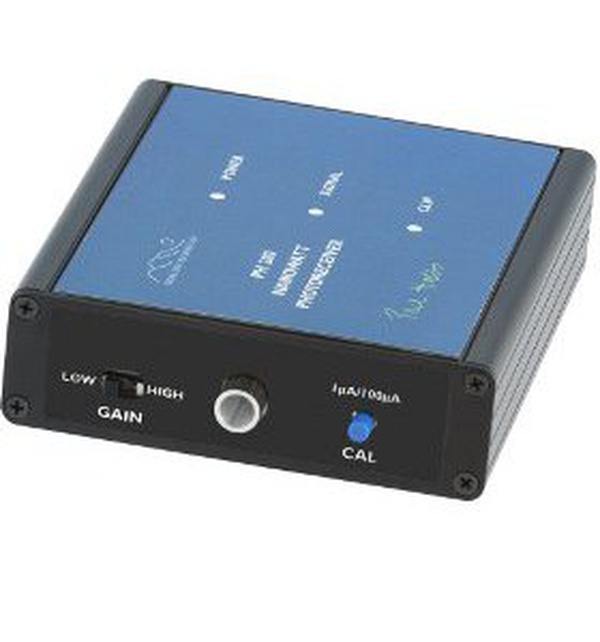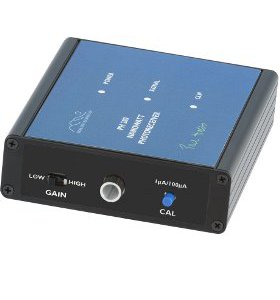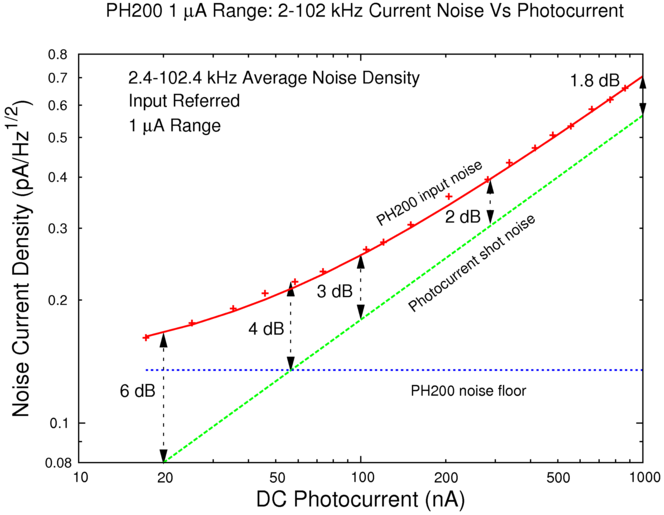
Besides info on do-it-yourself photoreceivers, I am introducing a new line of electro-optical products in cooperation with Highland Technology, a cutting-edge instruments company in San Francisco. The first product is a shot noise limited free space photoreceiver with quantum-limited sensitivity from 60 nW to 100 μW and an honest 1 MHz bandwidth (3 MHz on the 100 μW range). For photocurrents below a microamp, it's significantly better than even the bootstrapped cascode, and it comes in a nice module that fits your setup easily and has normal normal 1/4-20 and M6 threaded mounting holes.
It doesn't have some microscopic photodiode, either; the photosensitive area is 7 mm2, making alignment pretty easy even with very weak beams.
Update February 24th, 2018: The PH200 has been discontinued, but you can get an even better one: the QL01 from Hobbs ElectroOptics


It uses a novel photon-coupled architecture, i.e. it's a current feedback design based on an interesting new wrinkle on the optocoupler. Normally if you use photocurrent feedback to avoid resistor Johnson noise, you pay at least 3 dB of SNR because the feedback photocurrent has full shot noise. The PH200 has some circuit tricks inside that actually suppress the shot noise of the feedback photocurrent by 3 dB,(*) resulting in truly shot noise limited overall performance for the unit, as you can see from the plot--asymptotically the SNR is within 1.8 dB of the input signal's shot noise.
(*) No, this is not impossible—it involves wiring three photodiodes in series, and dealing with their tendency to fight each other.